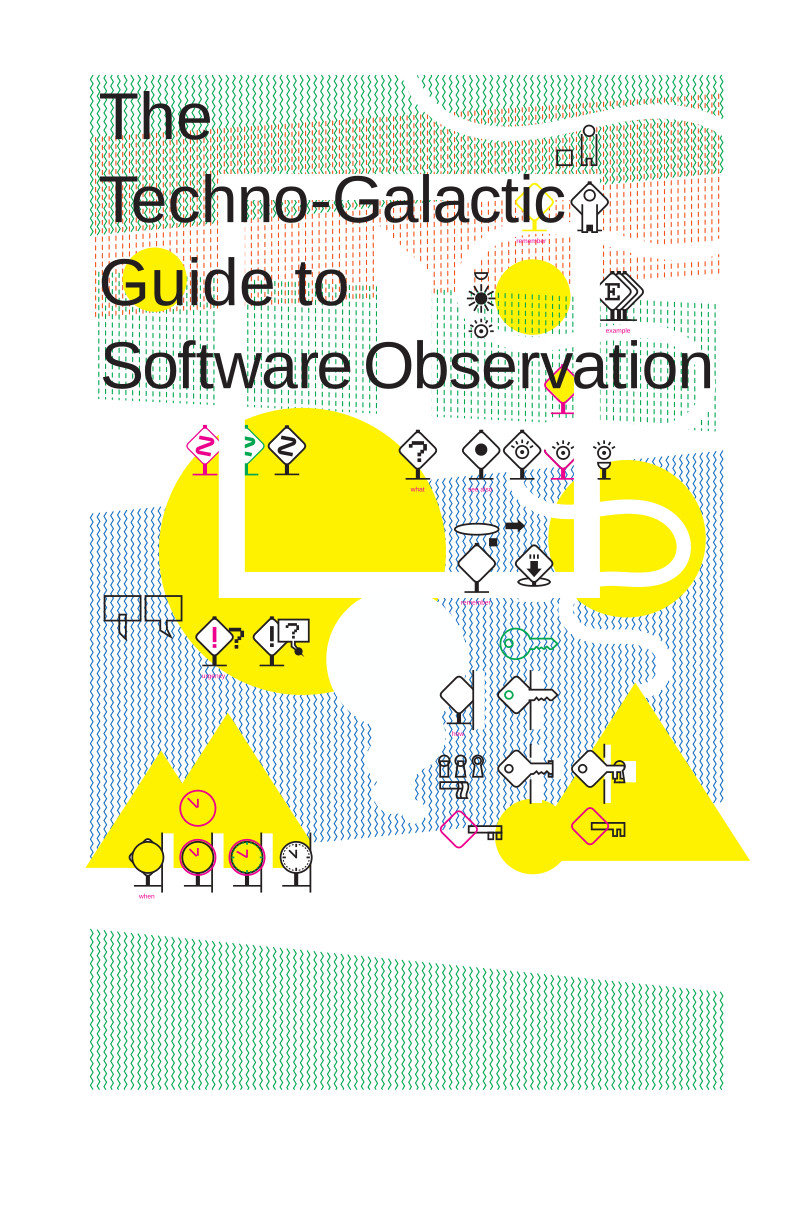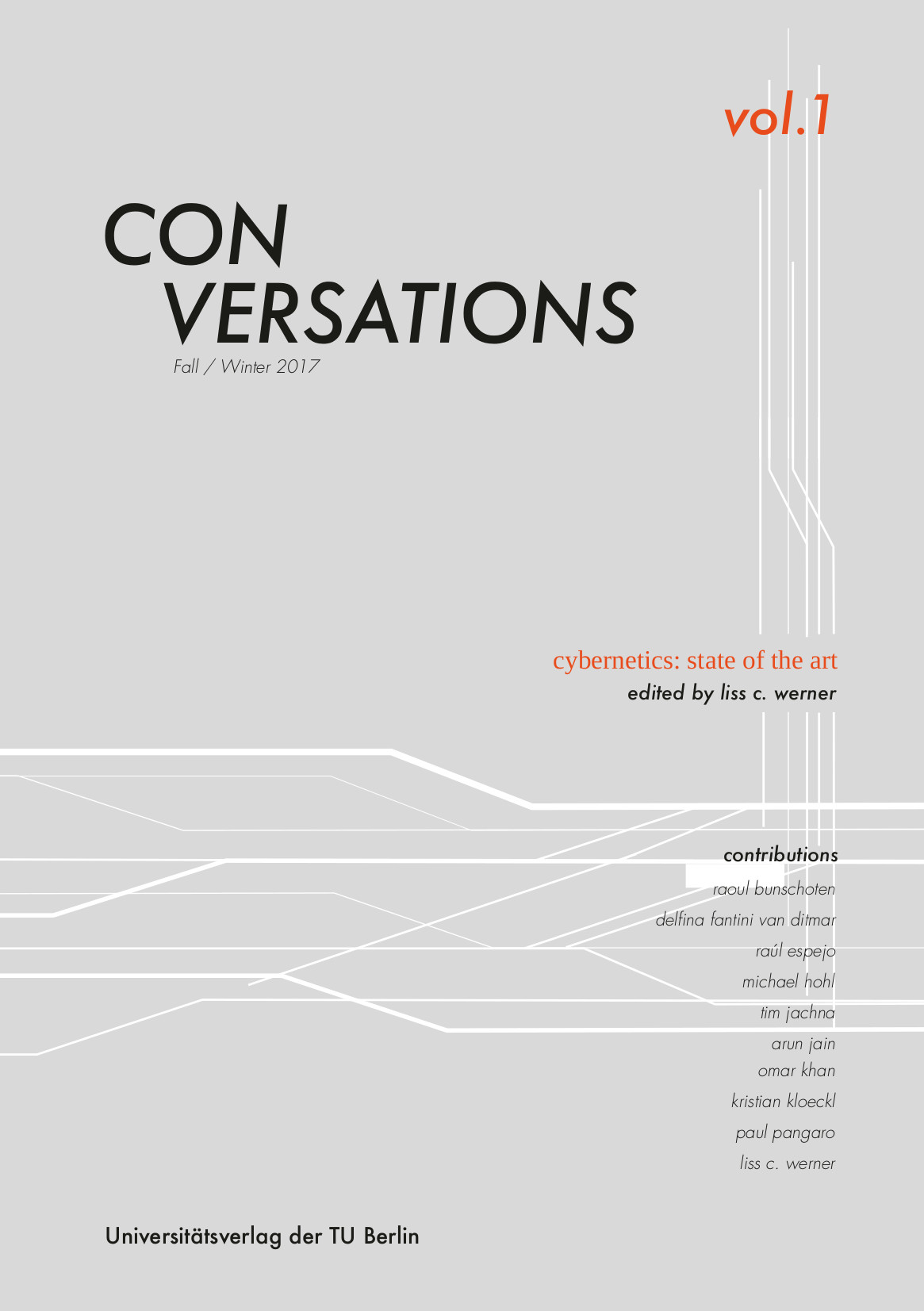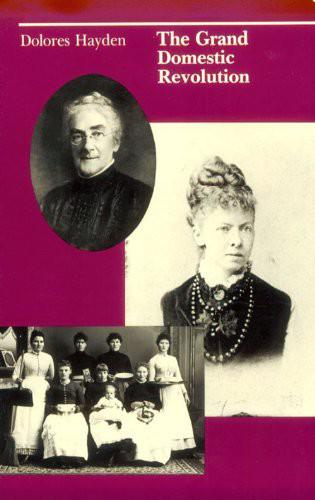The Techno-Galactic Guide to Software Observation (2018)
Filed under book | Tags: · agility, art, code, compilation, design, free software, interface, productivity, software, software studies, time, touch

“This techno-galactic software survival guide was collectively produced as an outcome of the Techno-Galactic Software Observatory (Brussels, 2017). This guide proposes several ways to achieve critical distance from the seemingly endless software systems that surround us. It offers practical and fantastical tools for the tactical (mis)use of software, empowering/enabling users to resist embedded paradigms and assumptions. It is a collection of methods for approaching software, experiencing its myths and realities, its risks and benefits.”
With contributions from Manetta Berends, Željko Blaće, Larisa Blazic, Freyja van den Boom, Anna Carvalho, Loup Cellard, Joana Chicau, Cristina Cochior, Pieter Heremans, Joak aka Joseph Knierzinger, Jogi Hofmüller, Becky Kazansky, Anne Laforet, Ricardo Lafuente, Michaela Lakova, Hans Lammerant, Silvio Lorusso, Mia Melvaer, An Mertens, Lidia Pereira, Donatella Portoghese, Luis Rodil-Fernandez, Natacha Roussel, Andrea di Serego Alighieri, Lonneke van der Velden, Ruben van de Ven, Kym Ward, Wendy Van Wynsberghe, and Peter Westenberg.
Compiled by Carlin Wing, Martino Morandi, Peggy Pierrot, Anita Burato, Christoph Haag, Michael Murtaugh, Femke Snelting, and Seda Gürses
Publisher Constant, Brussels, 2018
Free Art License 1.3
ISBN 9789081145961
244 pages
Publisher
Project folder
Event
PDF, PDF (44 MB)
HTML (different version)
Git
Liss C. Werner (ed.): Cybernetics: State of the Art (2017)
Filed under book | Tags: · architecture, city, cybernetics, design, systems theory, theory, urban design, urbanism

“Driven by cybernetic thinking, this book engages with pressing questions for architecture, urban planning, design and automated infrastructure; in an age of increasing connectivity, AI and robotization and an evolutionary state of the Anthropocene – perpetuating angst-ridden anxiety as well as excitement and joy of a future, that we will be able to predict with less and less certainty. The book discusses cybernetic principles and devices developed in the late 20th century – mainly developed by Ross Ashby and Gordon Pask (second-order cybernetics), to learn from for a future of mutual relationship and conversation between man and machine.
The anthology reviews and previews cybernetics as design strategy in computational architecture, urban design and socio-ecological habitats – natural and artificial. It weaves together cybernetic-architectural theories with applications and case studies ranging from regional planning to the smart home.
Nine chapters written by an international group of authors are structured into two complimenting parts. While ‘A Concept and a Shape’ focuses on the history and theory of cybernetics, its temporary disappearance and future impact (Raúl Espejo, Michael Hohl, Paul Pangaro, Liss C. Werner), ‘System 5’ – relating to Stafford Beer’s project ‘Cybersyn’ – discusses applications, the role of the individual and human feedback; also with a strong theoretical underpinning (Raoul Bunschoten, Delfina Fantini van Ditmar, Timothy Jachna, Arun Jain, Kristian Kloeckl).”
With foreword by Omar Khan
Publisher Universitätsverlag der TU Berlin, Berlin, Nov 2017
Con-versations series, 1
Creative Commons BY 4.0 International License
ISBN 9783798329539
xxvii+173 pages
Dolores Hayden: The Grand Domestic Revolution: A History of Feminist Designs for American Homes, Neighborhoods, and Cities (1981)
Filed under book | Tags: · architecture, city, design, family, feminism, labour, material feminism, women

“Long before Betty Friedan wrote about ‘the problem that had no name’ in The Feminine Mystique, a group of American feminists whose leaders included Melusina Fay Peirce, Mary Livermore, and Charlotte Perkins Gilman campaigned against women’s isolation in the home and confinement to domestic life as the basic cause of their unequal position in society.
The Grand Domestic Revolution reveals the innovative plans and visionary strategies of these persistent women, who developed the theory and practice of what Hayden calls ‘material feminism’ in pursuit of economic independence and social equality. The material feminists’ ambitious goals of socialized housework and child care meant revolutionizing the American home and creating community services. They raised fundamental questions about the relationship of men, women, and children in industrial society.
In reevaluating these early feminist plans for the environmental and economic transformation of American society and in recording the vigorous and many-sided arguments that evolved around the issues they raised, Hayden brings to light basic economic and spacial contradictions which outdated forms of housing and inadequate community services still create for American women and for their families.”
Publisher MIT Press, 1981
ISBN 0262081083, 9780262081085
367 pages
via Dubravka
Reviews: Paul Goldberger (New York Times, 1981), Eugenie L. Birch (J Society of Architectural Historians, 1982), Ellen Carol DuBois (Signs, 1982), Nancy F. Cott (NY Review of Books, 1983), André Levesque (Urban History Review, 1983), Daniel Garr (American Historical Review, 1983), Deborah Altus (Behavior and Social Issues, 1995).
Comment (0)
